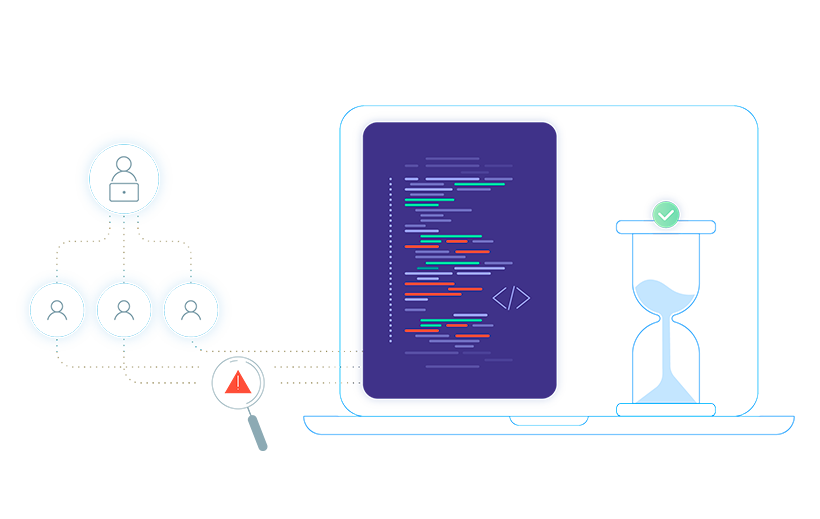The Hidden Dangers of Sprint Planning.
Agile sprint planning enables teams to agree on user stories, and quickly execute on them to deliver value to users. But one thing is missing from this process—information about quality. Which user stories contain the highest quality risks? Which user stories might require significant testing in later stages of the pipeline? In many cases, teams simply don’t know.
Imagine if a development team could understand the quality risks inherent in each epic or user story as they progress through an iteration. This would allow correct planning of testing or other efforts needed to mitigate the risk. Without visibility into quality risks, defects are only discovered late in the testing stage, or worse, in production.
When quality issues are discovered so late in the process, it is both difficult and expensive to recover. What if teams knew exactly which test gaps existed during sprint planning and could prioritize closing the most impactful? This would enable finding and fixing defects faster, more effectively, and crucially, tackle them before they cause incidents in production.
The Hidden Dangers of Sprint Planning.
Agile sprint planning enables teams to agree on user stories, and quickly execute on them to deliver value to users. But one thing is missing from this process—information about quality. Which user stories contain the highest quality risks? Which user stories might require significant testing in later stages of the pipeline? In many cases, teams simply don’t know.
Imagine if a development team could understand the quality risks inherent in each epic or user story as they progress through an iteration. This would allow correct planning of testing or other efforts needed to mitigate the risk. Without visibility into quality risks, defects are only discovered late in the testing stage, or worse, in production.
When quality issues are discovered so late in the process, it is both difficult and expensive to recover. What if teams knew exactly which test gaps existed during sprint planning and could prioritize closing the most impactful? This would enable finding and fixing defects faster, more effectively, and crucially, tackle them before they cause incidents in production.
Making Quality Risks Visible to Every Manager in the Organization with SeaLights Quality Governance.
Making Quality Risks Visible to Every Manager in the Organization with SeaLights Quality Governance.
Daily Risk Reporting.
SeaLights Software Quality Governance produces real time reports about quality risks, within a specific sprint or release.
Teams can immediately understand which part of their sprint is a red herring that could cause issues in production, and take preventive measures as part of their sprint planning.

Daily Risk Reporting.

SeaLights Software Quality Governance produces real time reports about quality risks, within a specific sprint or release.
Teams can immediately understand which part of their sprint is a red herring that could cause issues in production, and take preventive measures as part of their sprint planning.

Traceability of Code Changes to User Stories.
When a developer touches code anywhere in a software project, SeaLights can trace that code back to the original user story which was agreed upon in sprint planning. If that code exhibits a quality risk, the risk is attributed back to the original user story.
Tracing risks to their origin creates a feedback loop that can prevent future quality risks. In the next planning cycle, teams can consider the true impact of touching specific functionality or components.
Conversely, having true visibility of quality risks can also show teams which areas are “safe” and can be worked on with low risk of quality issues. Even when working on complex legacy systems, SeaLights can help teams make changes without the fear that something will break.
Traceability of Code Changes to User Stories.

When a developer touches code anywhere in a software project, SeaLights can trace that code back to the original user story which was agreed upon in sprint planning. If that code exhibits a quality risk, the risk is attributed back to the original user story.
Tracing risks to their origin creates a feedback loop that can prevent future quality risks. In the next planning cycle, teams can consider the true impact of touching specific functionality or components.
Conversely, having true visibility of quality risks can also show teams which areas are “safe” and can be worked on with low risk of quality issues. Even when working on complex legacy systems, SeaLights can help teams make changes without the fear that something will break.
Collaboration Around Standardized Metrics.
SeaLights provides standardized quality metrics that can be viewed and understood by all relevant personas in the development pipeline—from development managers, product owners and QA managers, to individual developers and testers.
When a quality risk is surfaced, and reported to the most relevant stakeholder, it is easy mitigate the risk. A developer can update the code, a tester can add a test, or a manager can decide to change a requirement—whatever will mitigate the risk in the fastest and most effective way.

Collaboration Around Standardized Metrics.

SeaLights provides standardized quality metrics that can be viewed and understood by all relevant personas in the development pipeline—from development managers, product owners and QA managers, to individual developers and testers.
When a quality risk is surfaced, and reported to the most relevant stakeholder, it is easy mitigate the risk. A developer can update the code, a tester can add a test, or a manager can decide to change a requirement—whatever will mitigate the risk in the fastest and most effective way.
